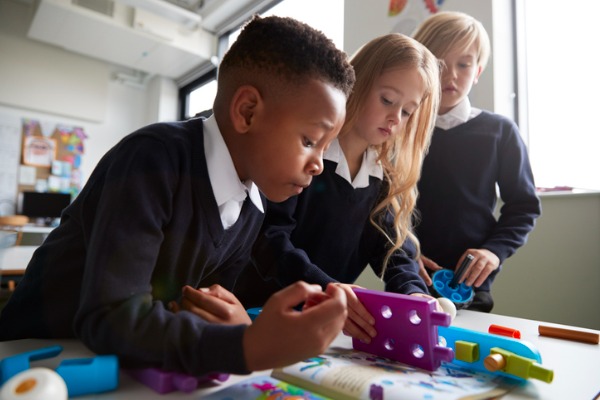In the wake of pandemic disruptions, child development concerns deepen. Elizabeth Holmes discusses prioritizing comprehensive solutions for a brighter future for all children.

Numerous articles over recent years have discussed a seeming decline in the development of young children. In 2022 Amanda Spielman, Ofsted’s chief inspector, raised concerns that increasing numbers of young children are unable to recognise facial expressions which, in Ofsted’s briefing on early years, was put down in part to interactions with people wearing face masks.
Going further, Spielman said that the pandemic and lockdowns had resulted in speech and language delays, obesity, delays in walking and so on. If children need additional support reaching key development goals, then support, they must have, regardless of the cause (which will be unknown until research sheds lighter).
And rather than blame important pandemic mitigations for a lack of developmental progress, we must find routes to navigate any such resulting issues should another airborne pandemic strike. The last thing we need is to turn away from the measures that will prevent the spread of a deadly virus. Rather, we need to ensure that if any mitigations in the future have undesired side effects, we act quickly to support those most affected.
Stephen Kilgour, an education adviser at Tapestry and the Foundation Stage Forum feels that it is important to take a holistic view of each child as we look at their development.
He explained, 'If we are to identify children who need additional support then it is vital that we make efforts to get to know them as best as we possibly can. An idea of how they are progressing developmentally is important, but we need to consider the child holistically and think about various aspects of their profile. Are we finding out if their basic needs are being met for instance? Or have we thought about sensory challenges they may be facing in the classroom?'
Dr Ali D’Amario, Educational Psychologist, author with a special interest in emotional well-being, mental health, and attachment, and trustee of the Bee-lieve Foundation, has seen that many schools are seeing a significant impact of the pandemic on the children starting in Reception.
She explained, 'The financial instability, lack of access to support services, parental mental health, and fewer opportunities for enriching play, interaction, and socialisation, are all continuing to have a noticeable impact across the EYFS prime areas. This is not the case for all children, but that simply means that the gap has widened, and inequalities exacerbated for the most disadvantaged children.'
We know there is a problem and that solutions and prevention strategies, when embroiled in politics, will not be easy to come by. But there is hope, as D’Amario explained.
'One of the most impactful things that school staff can do is to build trusting, supportive relationships with parents so that they can work together to bridge the gaps in development. Waiting lists for external agencies continue to leave schools waiting for much-needed support. Speech and language screening tools (e.g., WellComm) can be invaluable in identifying children who need additional support and providing early intervention.'
Kilgour points to how we can support children at key transitions, for example, between schools. He explained, 'If you are working with a child who is due to be transitioning to another setting or school, the more information that you can provide about the child, the better. If we know that a child has sensitivities to noise, for example, everyone must be aware of this.'
Supporting young children so that they can develop in a way and pace appropriate for their age is an essential part of any school’s work. Meeting the needs of all children, at all stages of their school careers, but particularly in their earliest years at school, is an obvious goal for all educators and one that is almost universally accepted.
The wider context in which we work can help or hinder, but the goal remains. These reminders may help.
Build and strengthen resilience, self-belief and confidence in all pupils.